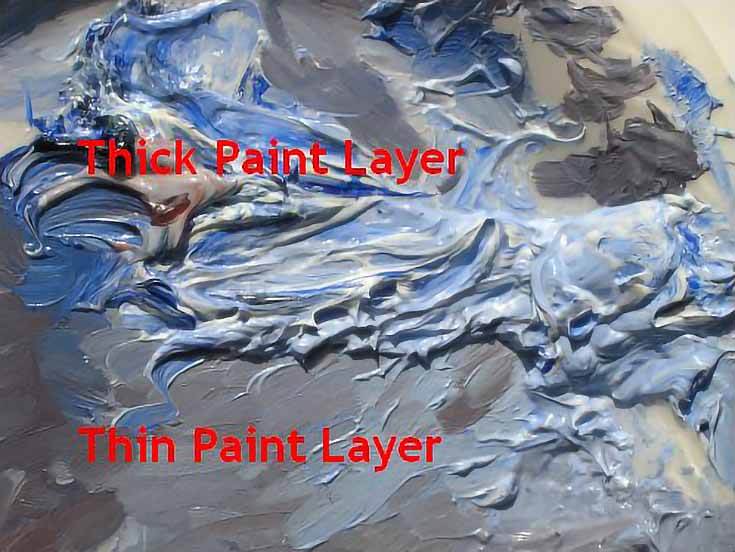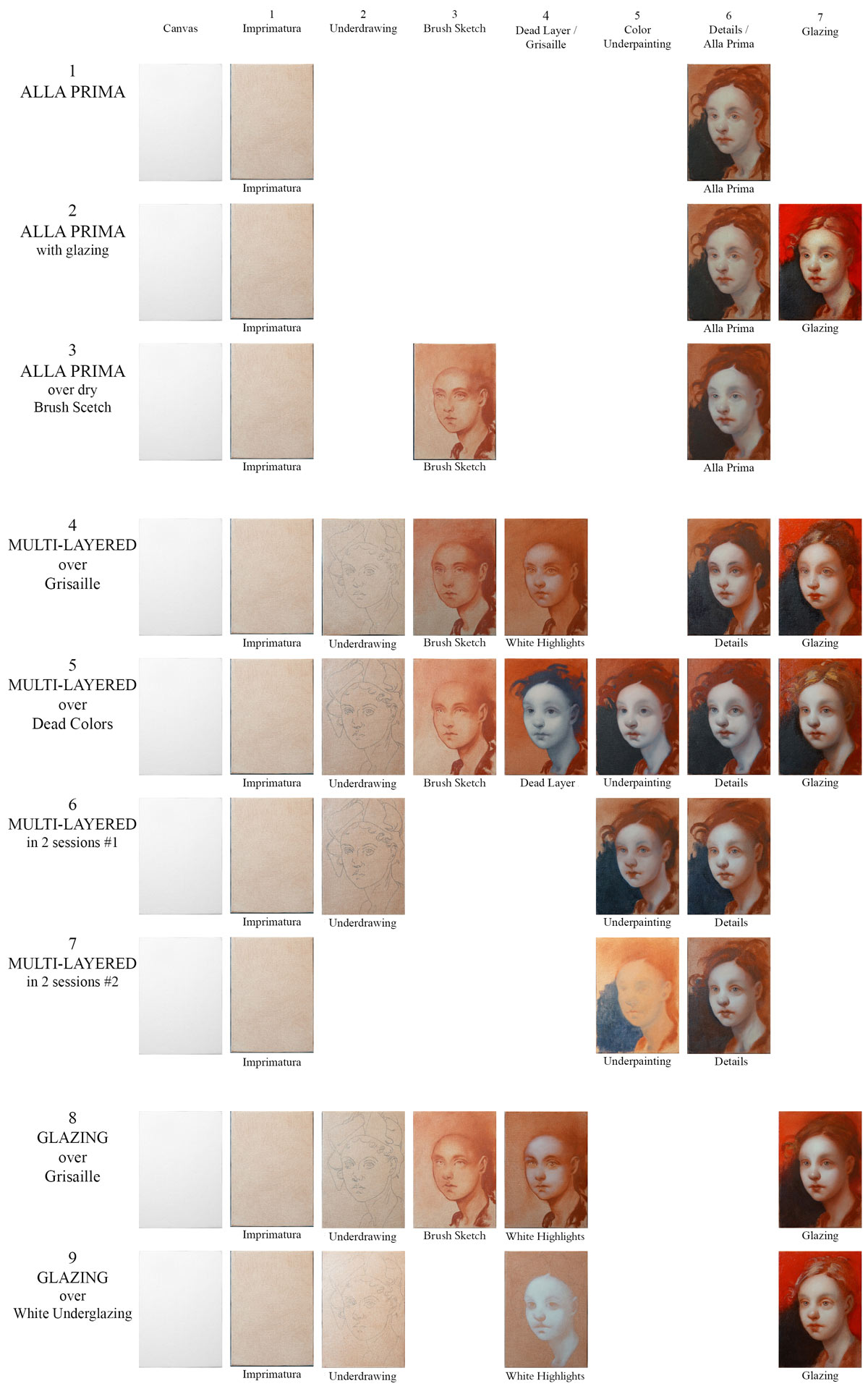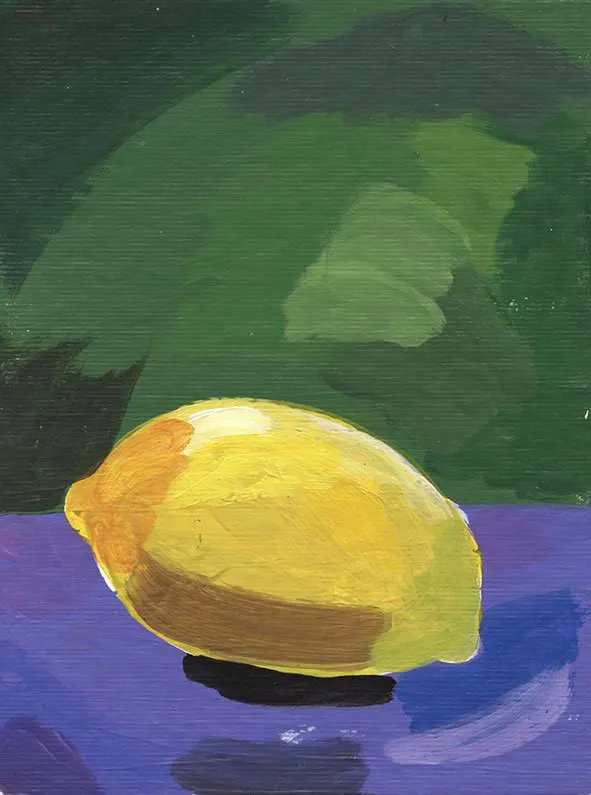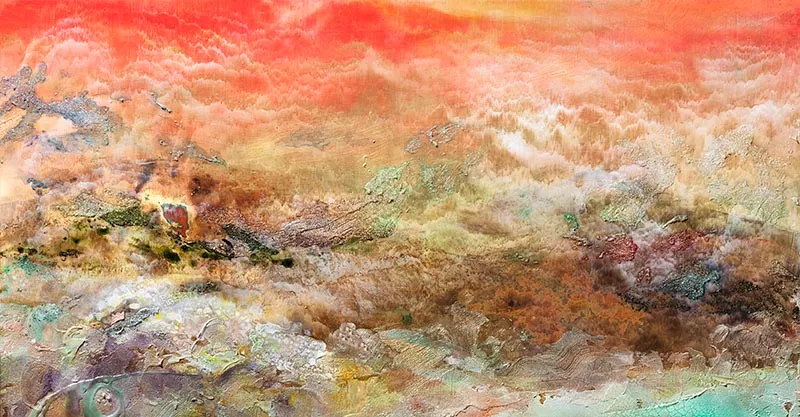Layering Scumbling and Glazing. Using oil painting glazing techniques allows you to create more luminous hues and a vivid mix of your paint layers.

Oil Painting On Tinplate By Francisco Jose Resende
For this work I used canvas 35x50cm.

. You can use a painted background as the base of the painting. Paints can be mixed together to obtain new colors this. In this easy tutorial you learn the basics of the principle of fat over lean.
Continuing to layer you can now apply oil paint mixed with mediums oil mediums are fatty and therefore more flexible. The technique basically encourages the use of transparent paint colors in several layers in an attempt to produce pleasing and vibrant hues. How to layer oil paint using the Oiling up or oiling out technique This technique uses linseed oil to build layers Time lapse surreal portrait and ow.
A glaze is a thin semi-transparent layer of paint. I talk about the painting - the copy of Little Bo Peep by Elsley. Toning the canvas seals the canvas protects the underlying ink drawing which you did right after you did your pencil drawing tracing over your lines and sets the stage for the rest of the process.
Hold your brush at the end for maximum control. See more ideas about oil painting painting paint colors. Wet into wet wet into semi-wet or wet into dry oil paints.
My abstracts usually reflect an image that can be seen as a possible landscape. If you want to master oil painting techniques you will need to learn the concept of layering and also how to apply glazing and scumbling. The Flemish technique first layer.
1 Paint an underlayer in monochrome paint. Next a second layer is applied pure or slightly thinned with water. Feb 1 2013 - On this Pinterest board I aim to show how oil paintings progress through different stages of the layering technique.
- Umber underlayer 2. Be sure to watch my basics of oil painting. This video shows you how to create a layered painting with oil colours.
Its multilayer old-flemish technique. Then over that layer wet or dry you can apply oil paint without any solvent. Then choose another and another layering and blending in an intuitive way.
The general practice is to create a monochrome underpainting using opaque colors and then gradually build up glazes on top allowing each layer to dry in-between. This layer has several functions. When youre layering paint you are applying a coat of paint on top of a dried layer of paint.
Choose a color in an instant. Give the work a story. The Seven-layer technique of oil painting.
Imprimatura or Toning the canvas. For the first layer the gesso can be thinned with water to an easily spreadable thickness. Block in color with diluted brush strokes by following the outlines of an object.
Bring your experiences to what you paint. Once mixed pull a little on knife and squint your eyes while viewing the knife just in front of your subject. Glazing is a technique that consists in applying a thin layer of transparent paint over the surface.
Use a representational touchstone. Oil paint is usually mixed with linseed oil artist grade mineral spirits or other solvents to make the paint thinner faster or slower-drying. You can use a grisaille in which you paint in shades of grey or use other colors such as green called a Verdaccio or brown called a Bistre.
The 7 layers are as follows. Hold the paintbrush correctly. Glazing is a popular technique in oil painting where glazes are applied on top of an opaque layer of paint which has been allowed to dry.
Traditional oil painting techniques often begin with the artist sketching the subject onto the canvas with charcoal or thinned paint. There are many ways that an artist can grip the paintbrush when painting but theres one go-to method that every artist should know to get the most fluidity and sensitivity from each stroke. For highly absorbent grounds the ground first can be treated with a layer of Amsterdam.
Use diluted paint applied in small. This means that you can start off with a first base layer using oil paint mixed with solvent like a wash. Because the solvents thin the oil in the paint they can also be used to clean paint brushes.
How to glaze an oil or acrylic painting. Use as few paints as possible to achieve the color you need. - Umber underlayer 1.
I go to that way which Artpapa showed. How to layer an oil painting. 10 oil painting techniques in detail.
Glazing is one of the fundamental techniques of the old masters and remains a powerful way to create luminous. Extolling the benefits of glazing LaRock emphasizes that laying down transparent veils of paint on top of dried opaque layers unifies a paintingand interacts optically which facilitates a luminous backlit glow a signature of his own beautiful work. Basic Oil Painting Techniques.
When youre blending paint colors together you are creating an area between the two paint colors where they gradually mix so that theres a slight gradient transition between the two original paint colors. Read on a for a quick introduction to these important topics. Mix small amounts at first youll have to scrap some but dont throw it out You can add it to your gray mixtures in small amounts.
Oil Painting Layering Lessons. This allows you to. Each layer contributes to the building of the painting.
Once oil painters begin figuring out the real power of oil paints its time to try more advanced oil painting techniques like Chiaroscuro and Impasto.

The 3 Oil Painting Rules You Must Follow

Imprimatura Or Toning The Canvas The First Layer In Oil Painting Techniques

Oil Painting Basics How To Build Layers Youtube

Various Oil Painting Methods Overview Old Masters Academy

Layered Painting Technique With Van Gogh Oils Jackson S Art Youtube

How To Paint With Layers In Acrylic Oil Nancy Reyner


0 comments
Post a Comment